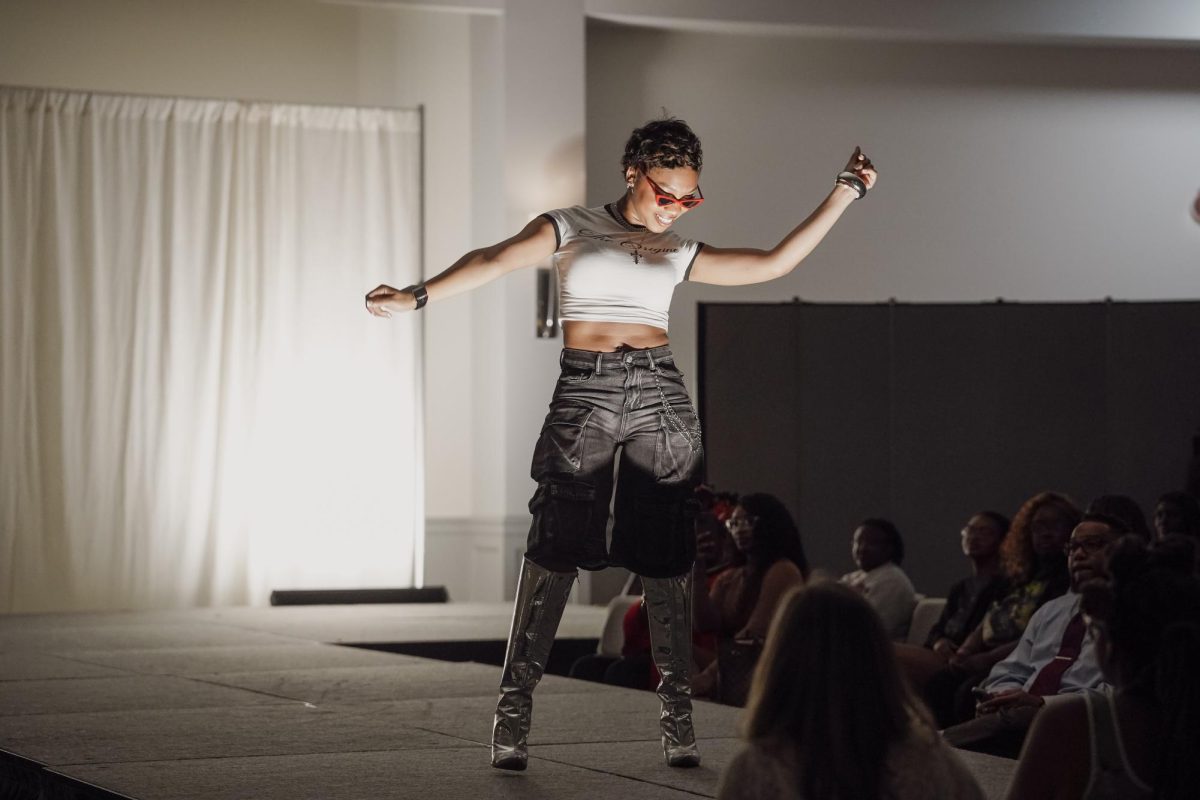The evening began with the swirling of skirts and tapping of feet and ended on the musical note of a Cajun tune. Last Thursday, residents from the community traveled to Nicholls to dance the night away and learn about a Mardi Gras tradition.This was the sixth year the Cajun/Zydeco Music and Dance Exhibit has been held in an attempt to preserve the Cajun heritage.
“This year’s theme moves from last year’s musical instruments tribute and theme to incorporate the Mardi Gras tradition shown through the library’s Cajun heritage collection,” Mark Daganaar, library director, said.
The exhibit, located on the first floor of Ellender Library, will be available for viewing through Feb. 12.
The fifth of a series of posters designed by Nicholls graduate, Patrick Banks, was unveiled.
“Once again (Banks) has put forth his best effort with incredible, different designs. In the past, we have had two of his posters earn national recognition by being published on the cover of a prestigious library journal, “The College of Research Library News,'” Daganaar said.
The event also included a silent auction where a framed copy of this year’s poster was available for bidding.
Ruth Stein, chairperson of the Bayou Cajun Chapter of the Cajun French Music Association, enjoyed the evening dancing with her husband and socializing with friends.
While people complain about having to exercise in the gym, Stein gets her exercise from dancing to tune such as “Cajun Waltz,” the two-step, the “Cajun Jig,” and Zydeco, Stein said.
In the Plantation Suite of the Student Union, Joseph Barth of the Barth Brothers, a New Orleans based float building company, lectured on “The Construction and Preservation of Old-Fashioned papier-mache and Gold Leaf Mardi Gras Floats.”
The Barth family has been in te float building business for the past three decades. Barth Brothers was formed in 1976 because they “were upset about the fact that Carnival floats and a lot of decor (the sculptural decorations that adorn the traditional New Orleans Mardi Gras floats) were often manufactured elsewhere,” Barth said.
“I have devoted my career to trying to convince people that the production of Mardi Gras sculpture, props, decor and floats themselves are an art form that is indigenous to Louisiana and should be protected and nurtured as much as architecture, the way we prepare food, our music and other such things,” Barth said.
In addition to Mardi Gras floats, Barth Brothers also constructed much of the sculpture at Harrah’s Casino, a 25-foot long whale shark that hangs in the Aquarium of the Americas and the mermaids that graced the entrance to the 1984 World’s Fair, all located in New Orleans.
The technique that Barth uses is the simple and cheaper than original papier-mache. He treats cardboard and brown craft paper with a pressure sensitive adhesive. The result is material that will stick to itself and not to the sculpture.
This technique allows the sculptor to shape an object without first having to construct a skeletal structure.
“Part of my family tradition was doing the old style Mardi Gras floats that were epitomized around the turn of the (twentieth) century. The designs were classical and baroque in style, (there was) a lot of detail and sweeping lines,” Barth said.
“(They were) nothing like the floats you see nowadays, which are basically constructed for the sole purpose of holding ‘x’ number of members, because, of course, that is how they get their funding to build the floats,” he said.
Currently, Barth Brothers are the only float builders in New Orleans who build their own floats and decor. “Most of the floats we see nowadays are almost entirely imported and mass-produced from elsewhere in the country and the world,” he said.
Because both sides of the paper are treated, the material is very water-resistant. When the project is complete, it is covered with fire resistant paint, Barth said. Sometimes a fire resistant chemical is used to adhere to fire codes.
Prices range from a couple of hundred to thousands of dollars, depending on the complexity of the structure. Barth Brothers can produce several medium size pieces in one day.
The finishing touches put on the structures include a latex base paint with acrylic accentuating the fine details.
“We use a lot of gold-leafing on the floats and that is something that is a part of the traditional New Orleans Mardi Gras style float that we make a big deal about,” Barth said.
“There should be more of an effort made to preserve the artistic angle of Mardi Gras as opposed to just the beads and doubloons. We would like to see more of an emphasis on encouraging local people, artists and artisans, to continue the tradition of building things here in New Orleans for parades and making the floats more of an artistic achievement than just the annual big party, screaming for beads,” he said.
A model of the float designed by James Naquin Jr. and constructed by Barth Brothers will be kept in Ellender Library’s Mardi Gras collection.
In the Cotillion Ballroom of the Student Union, couples gathered to dance and socialize. Even the Sodexho workers danced to the lively beat of the Lafourche Cajun Band.
Though mainly older adults were present, some students did take a peak into the ballroom.
Anke Tonn, program director and assitant librarian, said it is important that the younger generation not lose sight of their Cajun heritage because it is unique.
“It think the Cajun culture with the music, dancing, food and literature is so wonderful. I am very much impressed. I think we should be very proud of this and we should preserve it,” she said.







